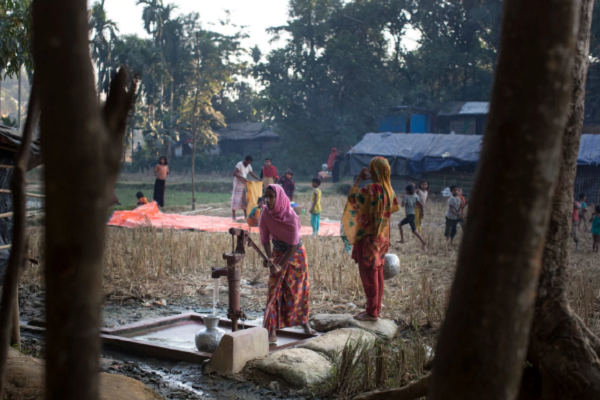Humanitarian Experts Warn about Situation of Rohingya Refugees

About 650,000 refugees fled their homes in Myanmar last summer after the government launched a clearance operation. The refugees are now living in makeshift camps in the Cox's Bazar area of Bangladesh where they joined 200,000 refugees who had fled earlier waves of persecution.
The Rohingya Muslims are often described as one of the most marginalized groups in the world and earlier this week UK MPs called for the Myanmar government to be referred to the international criminal court over “crimes against humanity” in last summer's violence.
At a scientific conference in London organized by medical charity Médecins Sans Frontières (MSF), Sidney Wong, the organization’s medical director, described the plight of the refugees in Cox's Bazar as “precarious” - the area is prone to cyclones and the refugees have little access to clean water and sanitation and are prone to vaccine-preventable diseases.
Between September and February MSF treatment centers saw 4370 cases of measles and did two rounds of mass vaccination campaigns, supported by the Bangladeshi ministry of health.
And by the end of February MSF staff had treated more than 4600 cases of diphtheria, a highly infectious and potentially fatal infection that affects the nose and throat.
A study conducted by Unicef, the US Centers for Disease Control and Prevention, and Action against Hunger found that a quarter of Rohingya children were malnourished.
Dr Wong said that MSF also treated 300 women, aged between nine and 50, who had been subject to sexual violence.
He said: “However, the real number we just don’t know. We think that’s probably just the tip of the iceberg.”
Kate White, a medical emergency manager for MSF, said the Rohingya "mega camp" was not like any other refugee camp she had ever seen.
"The camp has no site planning - it's just a massive amount of people who settled on a relatively vacant plot of land in a rural area. So it basically looks like a slum in a rural area. And they completely overwhelmed the host farmers who were settled there," she said.
In October MSF conducted a survey of more than 2,800 households to find out how many people had been killed in the flight from Myanmar.
MSF estimated that 9,000 people died, many of them children, with 72 per cent of those deaths due to violence.
Dr Wong said: “The majority of deaths were due to gunshots and we also heard shocking reports of people burned to death in their homes. The number of deaths reported are likely to be underestimates. [The survey does] not cover all the refugee settlements in Bangladesh, nor does it account for families who did not make it across the border."
Dr Wong said medical professionals had a “responsibility to bear witness, to expose and document the unimaginable human suffering that many face in times of crisis”.
Source: The Telegraph



